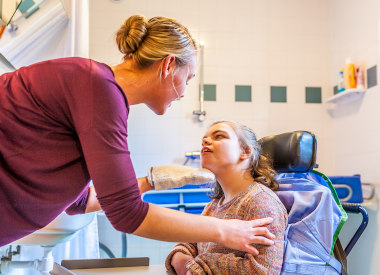
Sidney Kimmel Medical College
Department of Obstetrics & Gynecology
Advancing the Future of OBGYN Clinical Care Through Education & Research
The Department of Obstetrics & Gynecology (OBGYN) at Thomas Jefferson University strives to deliver the highest level of patient-centered care. Through our education programs, we are training future healthcare leaders to provide compassionate, responsive and equitable care for all patients. Through our research, we are making groundbreaking discoveries that advance the standard of evidence-based care in Philadelphia and across the country and world.
Looking to make an appointment or find out more information about a condition or office location?
Leadership Jenell S. Coleman, MD, MPH, Appointed Chair of Obstetrics & Gynecology
We are pleased to welcome Dr. Coleman, who has devoted her career to caring for and advocating for women for more than two decades. Dr. Coleman joins Jefferson from Johns Hopkins School of Medicine and will begin her new role on November 10, 2025.
Educational Programs
Research Program
Our faculty and trainees conduct research that makes a difference. Our patient-centered research directly impacts clinical practice here, at Jefferson Health, and worldwide. Research is a core facet of our OBGYN department and, therefore, our education programs. Our team prioritizes trainees’ research endeavors and productivity, offering dedicated research support and guidance across our OBGYN subspecialties.
Diversity & Inclusion
The Department of Obstetrics & Gynecology believes that diversity makes us a stronger and better place to work and learn. We have a shared commitment to increase the diversity of our trainees as well as our faculty and staff. We take a broad view of diversity and value the qualities that make us each unique and the contributions we each make to the whole. Our trainees are exposed to diverse clinical environments with the goal of preparing them to be among the most culturally competent physicians in the nation. As a department and institution, we are dedicated to addressing the bias and discrimination pervasive in healthcare and ending disparities in care in our larger community.



